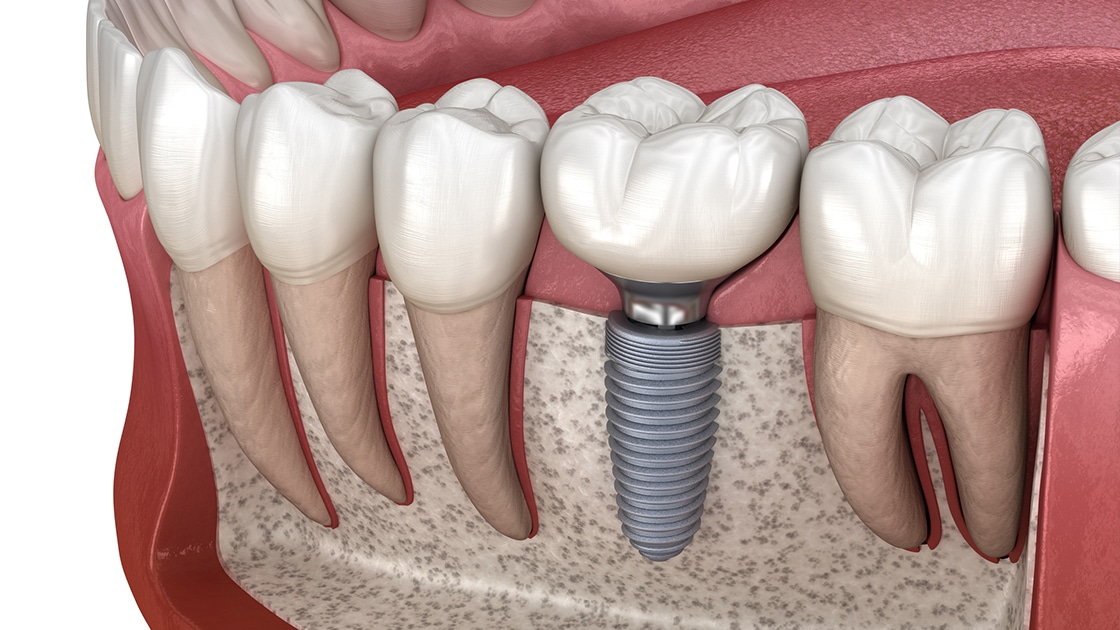Getting The Dental Sense To Work
Table of ContentsDental Sense Things To Know Before You Get ThisGetting The Dental Sense To WorkNot known Factual Statements About Dental Sense The Buzz on Dental Sense
are medical devices surgically dental implanted into the jaw to recover an individual's capacity to chew or their appearance. They supply support for fabricated (phony) teeth, such as crowns, bridges, or dentures. When a tooth is shed because of injury or condition, an individual can experience problems such as fast bone loss, malfunctioning speech, or modifications to chewing patterns that result in pain.Dental dental implant systems consist of an oral implant body and dental implant joint and might additionally include an abutment addiction screw. Wisdom tooth cavity. The oral implant body is operatively placed in the jawbone instead of the tooth's root. The oral implant joint is usually connected to the dental implant body by the abutment fixation screw and expands through gum tissues right into the mouth to sustain the attached fabricated teeth
(https://www.huntingnet.com/forum/members/dentalsense1.html)Framework of The Dental Implant System selecting oral implants, talk to your dental copyright regarding the prospective advantages and dangers, and whether you are a candidate for the procedure. Things to consider: Your general wellness is an essential consider establishing whether you are a great prospect for dental implants, for how long it will require to heal, and for how long the dental implant may remain in location.
Smoking cigarettes might impact the healing procedure and reduce the long-lasting success of the implant. The recovery process for the dental implant body may take several months or longer, during which time you commonly have a short-lived abutment instead of the tooth. the dental implant procedure: Meticulously follow the oral health instructions given to you by your oral supplier.
Getting My Dental Sense To Work
Implant failing can lead to the demand for another procedure to repair or change the dental implant system. Brings back the ability to eat Recovers cosmetic appearance Helps maintain the jawbone from reducing due to bone loss Protects the health of the bordering bone and gums Assists keep surrounding (nearby) teeth steady Boosts quality of life Damages to surrounding natural teeth throughout implant positioning Injury to the surrounding tissues throughout surgical treatment, such as sinus opening Injury during surgical procedure (as an example, crack of surrounding jawbone) Poor feature, such as feeling like the teeth do not attack with each other typically A sensation that the tooth hangs or turning in place arising from an abutment screw loosening Implant body failing (looseness of the dental implant body) because of systemic infection, which may be more probable in patients with unchecked diabetes due to local infection in bone and gum tissues supporting the dental implant body due to postponed recovery, which may be more probable in clients who smoke Difficulty cleaning the gums around the implant, causing bad oral health Without treatment periodontal illness Post-surgical tingling because of nerve impingement or damages Constantly notify healthcare service providers and imaging technicians that you have oral implants before any type of magnetic resonance imaging (MRI) or x-ray treatments.
FDA is not knowledgeable about any type of adverse events reported for MRI or x-ray treatments with dental implants. Dental implants systems are generally made from materials that follow global agreement criteria of the International Organization for Standardization (ISO) or ASTM International. These standards have information of what makes a safe product.

A dental implant is a framework that changes a missing tooth. With screw-like tools, the surgeon inserts a dental implant right into the jawbone, and it acts as a support for an artificial tooth, called a crown.
7 Easy Facts About Dental Sense Explained
Some individuals are not qualified for oral implant surgical treatment. It is for dental cosmetic surgeons to operate on individuals with: acute illnessuncontrollable metabolic diseasebone or soft cells disease or infectionIf these issues are resolved, an individual can have the surgical treatment. In, oral surgeons avoid from operating on individuals with: If people with any one of the above undergo dental implant surgical procedure, there is a greater danger of the implant failing.

Dental dental implant surgery is an individualized process. It's not the exact same for everybody. Yet the complying with gives a general overview of what you can anticipate your dental practitioner, dental cosmetic surgeon, imp source periodontist or prosthodontist to do: Put the implant surgically. Provide you time to recover. Affix the article and final crown, bridge or denture.
Next off, your cosmetic surgeon will carefully place the oral implant right into your jaw. If your dental implant is near the front of your mouth, your dental expert will certainly make a temporary tooth for you to use up until you recover.
Excitement About Dental Sense
Your company can inform you what to expect in your situation. During the healing stage, your jawbone ought to fuse to the oral implant. This procedure, called osseointegration, is vital for stability and lasting success. This procedure can take anywhere from three to 9 months. In many cases, it might take much longer.
Once your implant heals, your dental expert can connect the abutment (tiny adapter message) and your final remediation (crown, bridge or denture). This typically takes about one hour to complete and might require a second small surgical treatment. You shouldn't really feel any type of pain throughout your oral implant procedure due to the fact that your supplier will make use of drug to numb your gum tissues.